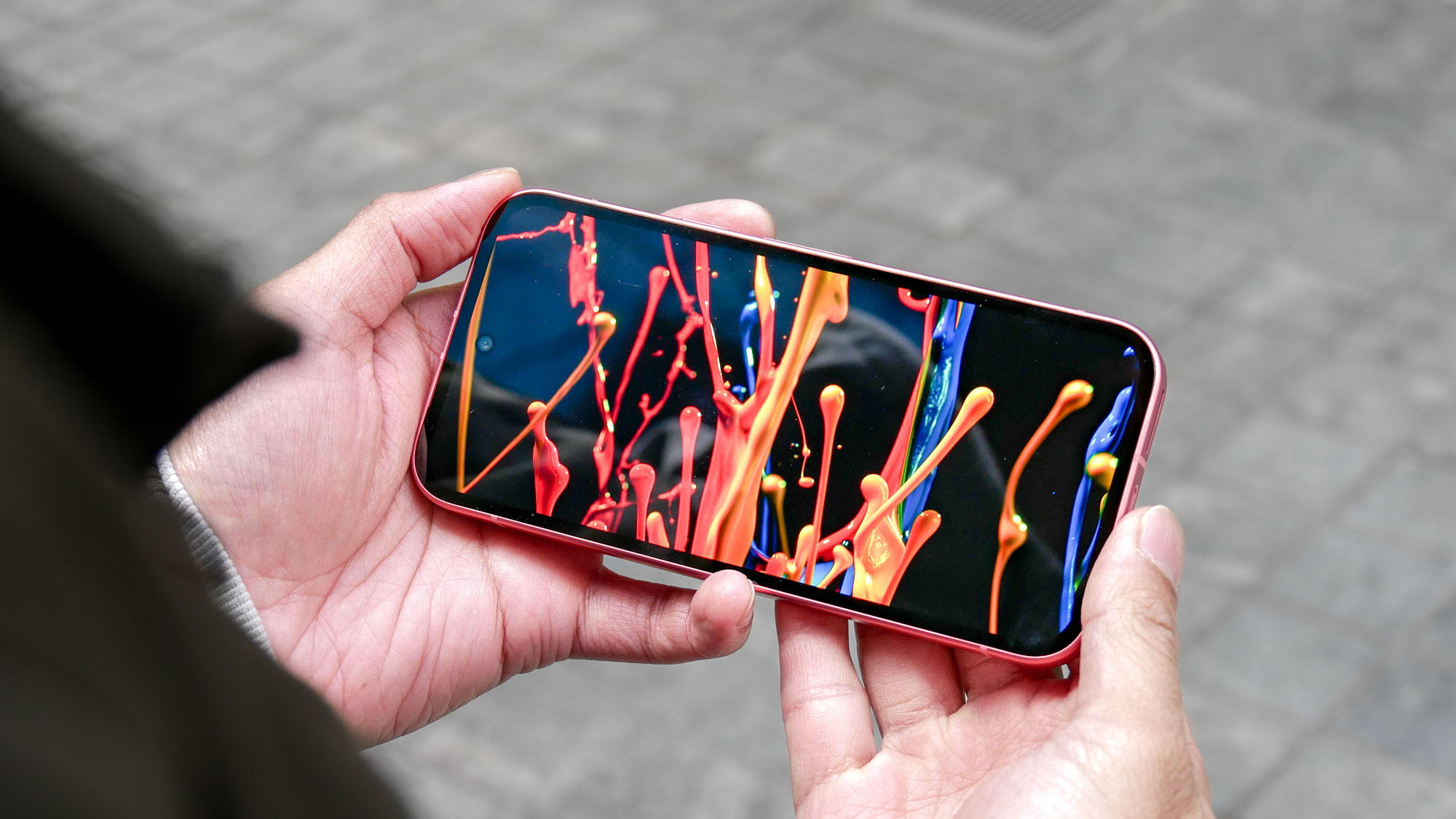Galaxy S10 Hands-On: No Notch and Three Cameras Set Samsung Apart
Samsung just pushed Android phones forward, but is it enough to make the S10 a must-have?
After a decade of Galaxy smartphones, Samsung needed to think outside the box — or, in this case, the notch. The $899Galaxy S10 and $999 S10+, available to preorder tomorrow (Feb. 21), aren’t trail-blazing foldable devices. But they’re also a far cry from the same ol’ smartphones we’ve been seeing for the past two years. That’s a good thing.
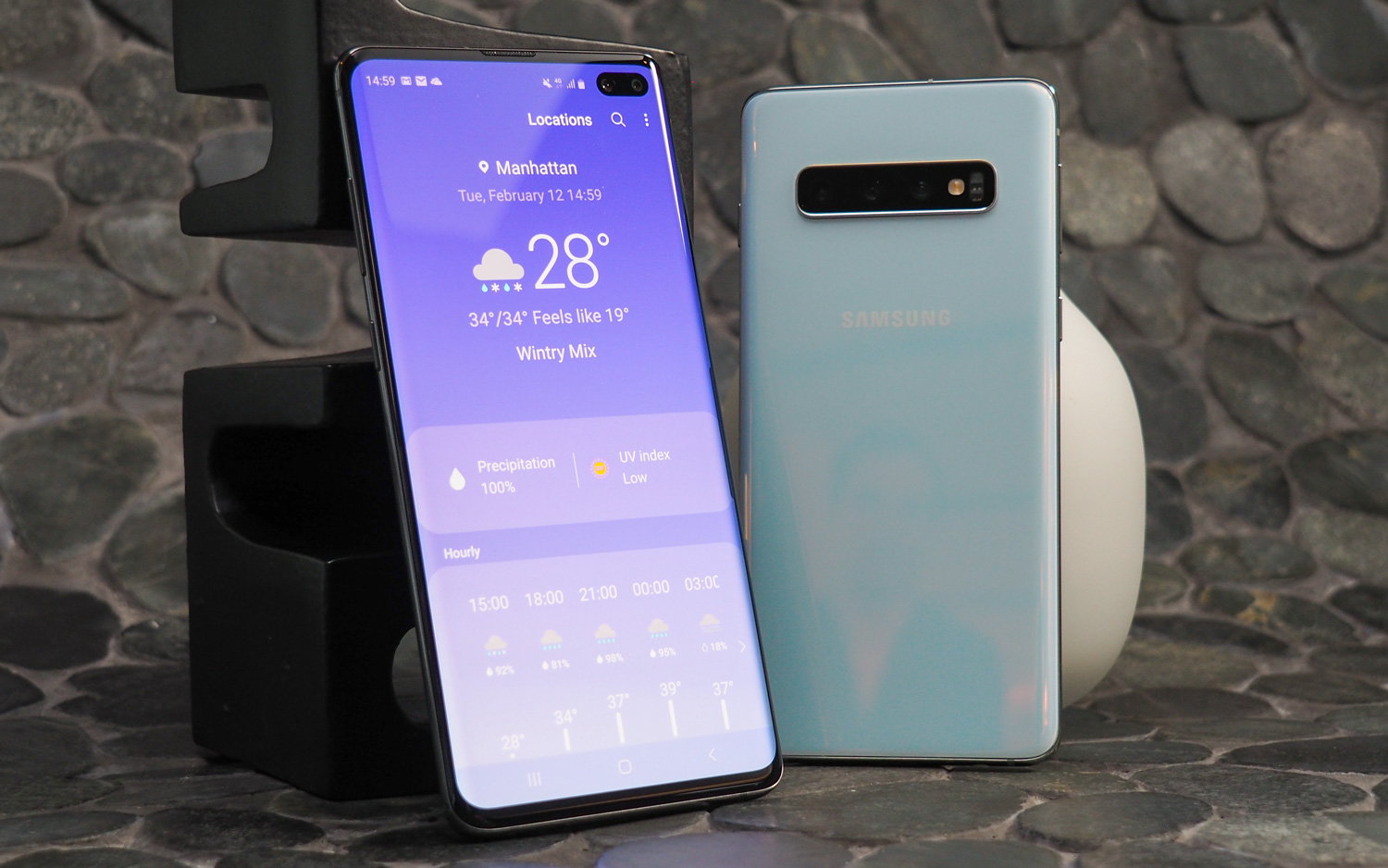
The Galaxy S10 and S10+ look completely different from the recent wave of Android phones that have copied the iPhone’s polarizing notch, with displays that appear to be literally hole-punched on the top right. The camera cut-outs are part of Samsung’s new Infinity O display design, which offers an eye-popping 93.1 percent screen-to-window ratio.
There are a slew of other compelling features here, too, from an in-display fingerprint sensor and reverse wireless charging to a triple-lens camera array (and two front-facing lenses for the S10+). But with futuristic foldable phones inching from concept to production and 5G-ready handsets launching later this year, the S10 and S10+ might be a tough sell, despite a fresh face.
Here’s the pros and cons so far based on our hands-on impressions.
Price and Availability
The Galaxy S10 starts at $899.99 and the S10+ is $999.99. Preorders for both devices start at 12:01 a.m. Eastern on February 21 (or 9:01 p.m. Pacific time on Wednesday night).
The S10 and S10+ will be available unlocked through Samsung or through carriers starting March 8. AT&T, Verizon, Sprint, T-Mobile, Spectrum Mobile, U.S. Cellular and Xfinity Mobile will sell both phones in-store and online, and you can also buy the through Amazon, Best Buy, Target, Walmart, Costco and Sam’s Club.
We’re betting that carriers will offer their own trade-in deals for the latest devices, but Samsung is offering up to $550 for eligible phones through its website or the Shop Samsung app. You can also snag a free pair of Samsung’s new Galaxy Buds by preordering an S10 or S10+ before March 7.
Galaxy S10 and S10+ Specs
| Row 0 - Cell 0 | Galaxy S10 | Galaxy S10+ |
| Price | $899.99 | $999.99 |
| Display | 6.1 inches | 6.4 inches |
| Rear Camera(s) | 16-MP ultra-wide (f/2.2), 12-MP dual-pixel wide (f/1.5, f/2.4), 12-MP telephoto (f/2.4) | 16-MP ultra-wide (f/2.2), 12-MP dual-pixel wide (f/1.5, f/2.4), 12-MP telephoto (f/2.4) |
| Front Camera(s) | 10-MP dual-pixel (f/1.9) | 10-MP dual-pixel (f/1.9), 8-MP depth-sensing (f/2.2) |
| CPU | Qualcomm Snapdragon 855 | Qualcomm Snapdragon 855 |
| RAM | 8GB | 8GB, 12GB |
| Storage | 128GB, 512GB | 128GB, 512GB, 1TB |
| microSD | Yes, up to 512GB | Yes, up to 512GB |
| Battery | 3,400mAh | 4,100mAh |
| Colors | Flamingo Pink, Prism Black, Prism White, Prism Blue | Flamingo Pink, Prism Black, Prism White, Prism Blue, Ceramic White, Ceramic Black |
| Size | 5.9 x 2.77 x 0.3 inches | 6.2 x 2.91 x 0.3 inches |
| Weight | 5.5 ounces | 6.17 ounces |
Display: The hole punch is real
The S10’s face looks mighty fine, though. Samsung has always made the best displays in the business, and the S10 levels up with a dynamic AMOLED panel — 6.1 inches for the S10 and 6.4 inches for the pro S10+.

The camera cut-outs are relatively unobtrusive, even on the S10+ where the horizontal dual-lens array takes up more space than the single lens on the smaller phone. The placement on the top right of the device leaves plenty of room for scrolling web pages, watching videos and playing games. Taking selfies could take some getting used to after years of staring up at a lens in the middle of a phone’s top bezel (although many people misjudge the location of the lens anyway, so perhaps it’s not a big deal).
The S10’s slightly curved, wide quad-HD+ AMOLED panel is even better than the infinity displays on past Galaxy devices, because it takes up so much more space — the screen positively cascades off the phone’s frame. The longer display also delivers a wider, 19:9 aspect ratio for a more immersive streaming and gaming experience.
The HDR10+ display also has built-in blue light reduction that doesn’t require a filter, which Samsung says boosts color accuracy and outdoor visibility.
Biometrics: Ultrasonic fingerprint wows
Samsung embedded an ultrasonic fingerprint sensor beneath the S10’s display, which lights up on the lock screen to guide your finger. Just like the OnePlus 6T, the sensor responds almost instantaneously when you press it and jumps directly to the home screen.
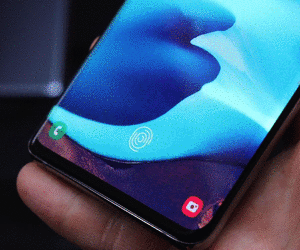
The ultrasonic scanner takes a 3D contour of your finger, unlike the 6T’s scanner, which uses an optical scanner to reflect light off your digit. Ultrasonic technology is reportedly more secure and more accurate, but our experience with the 6T indicated that an optical scanner works just fine.
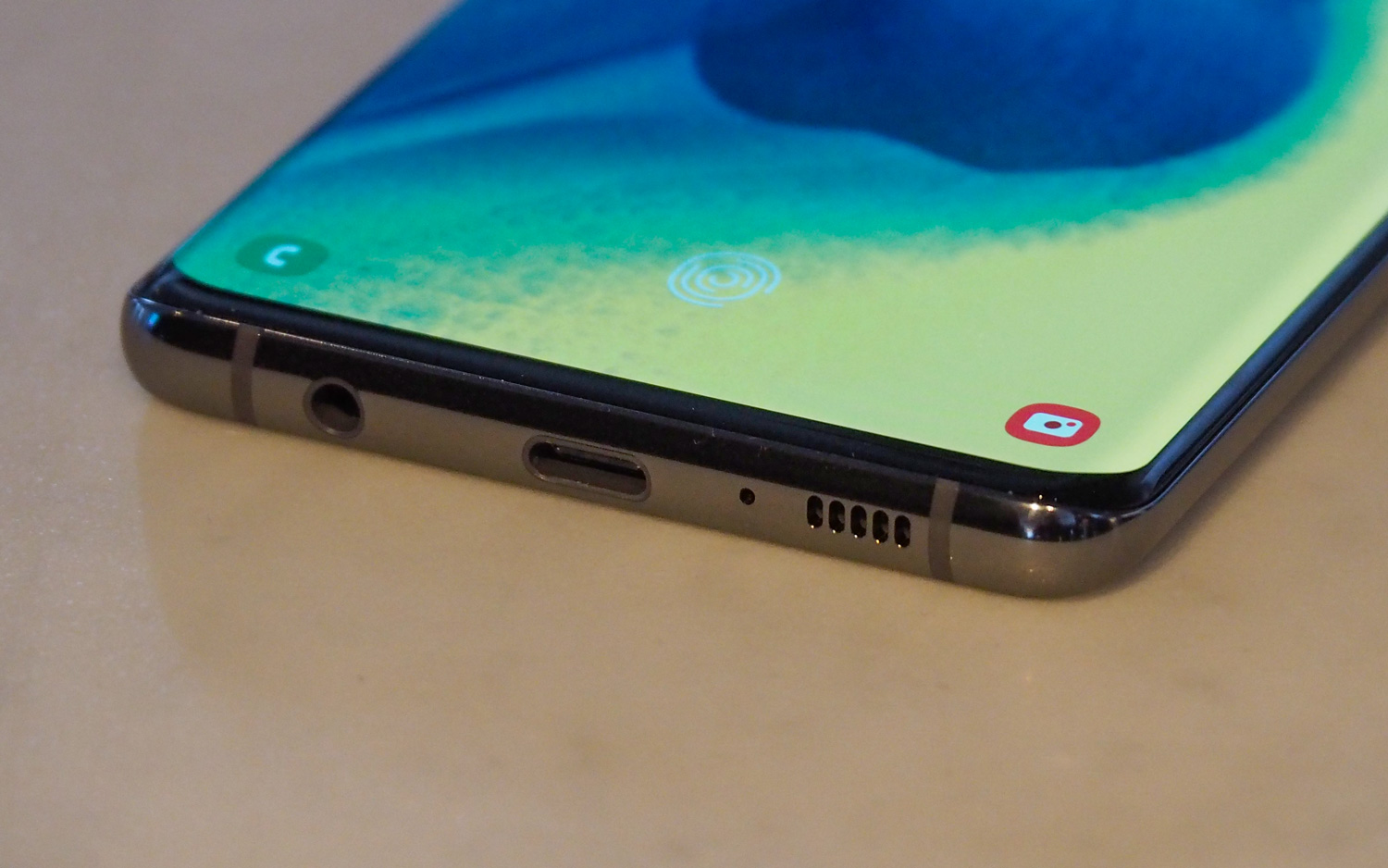
The in-display reader differentiates the S10 and S10+ from the smaller S10e, which still has a physical button for reading fingerprints (though Samsung has moved that button from the back to the side). Your fingerprint data is stored on the device in Samsung’s Knox Trust Zone, not in the cloud.
The S10 still offers facial recognition, but Samsung ditched iris scanning to make more room for that giant display (and simplify the number of unlocking options).
Cameras: Triple lenses and a bonus for S10+
The S10 and S10+ sport a rear-facing, horizontal triple-lens camera array: an ultra-wide 16-megapixel shooter with 123-degree field of view, a standard 12-MP lens with 77-degree field-of-view, and a 12-MP telephoto lens with 2x optical zoom. You can switch seamlessly between the three in the live preview shot, and a new Shot Suggestion feature acts as a photo assistant, guiding you how to line up the shot when you toggle it on in the Camera settings.
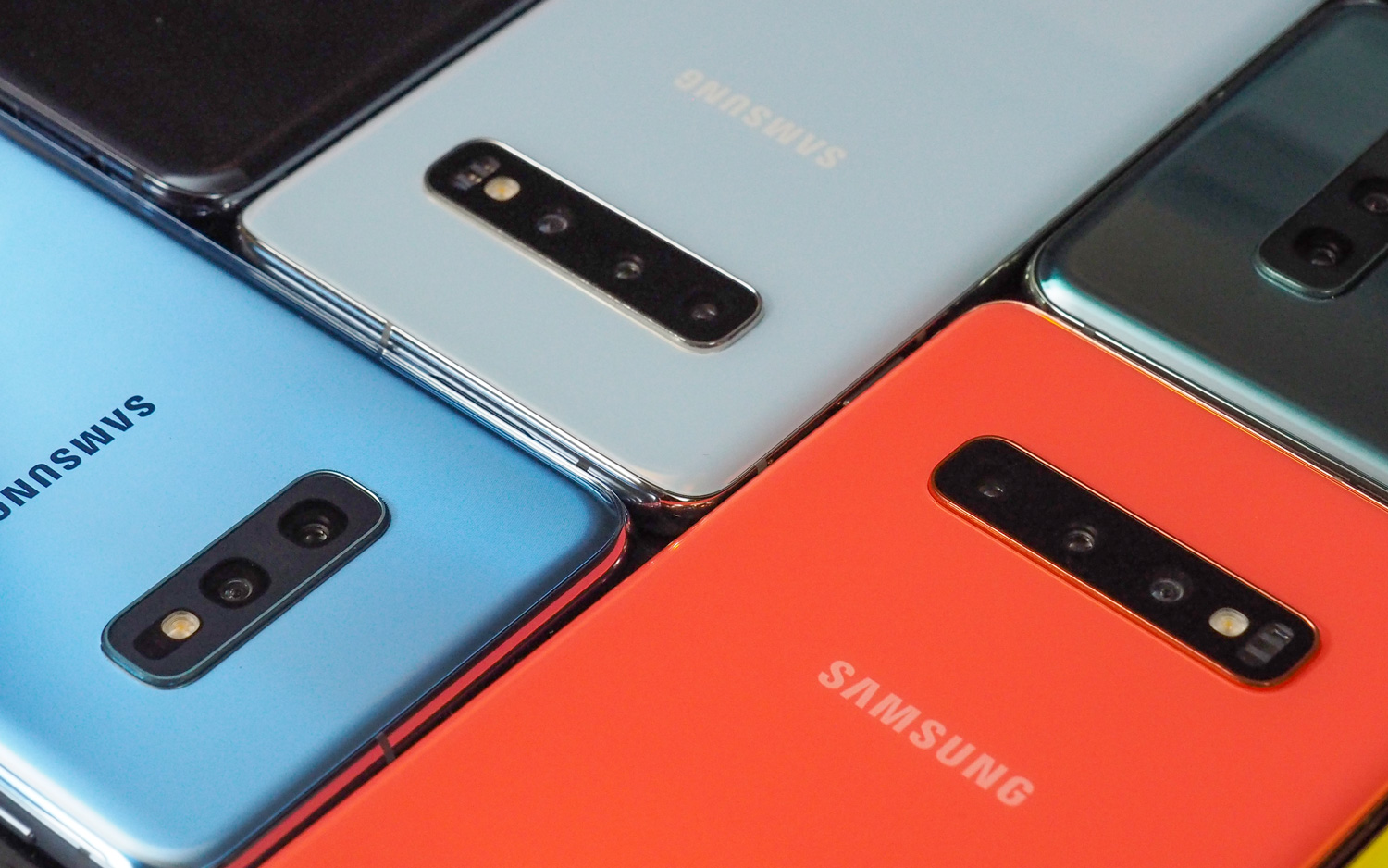
The S10’s camera has a neural processing unit built into the processor to identify objects and scenes more quickly than the S9. There are 10 new categories that the phone can recognize and then quickly optimize the camera settings to better capture those scenes.
The S10+ has one extra camera up front: an 8-megapixel, depth-sensing, sRGB lens that captures more detail than the primary 10-MP lens does on its own. That helps the S10+ achieve fun new effects like colorizing the subject and turning the background black-and-white. I tried this effect in a selfie, and the strawberry blonde of my hair positively blazed against the stark black-and-white of the studio space behind me, no photo-editing required.
Samsung isn’t giving up on its polarizing AR Emoji, which are animated avatars that mimic your facial movements. Sort of. The feature launched with the Galaxy S9, but we weren’t big fans — they’re actually kind of creepy. Samsung says the S10’s AR Emoji are now better at tracking your face, and a new Body Tracking mode animates your avatar’s entire body. You can also customize your AR Emoji with a new AR World app in the Galaxy’s app store. And you can overlay your emoji on top of your actual face if you don’t like the expression you were making, due to a new Mask Mode. I didn’t get a chance to experiment with the improved emoji, but I’m skeptical.
The S10’s artificially intelligent cameras don’t have any unique low-light features to compete with Google’s super-smart Pixel 3 and its Night Sight feature. Samsung’s past smartphones have struggled to capture stunning photos in dim settings, and we’re not sure the Galaxy S10 or S10+ will achieve markedly different results. Stay tuned for a full review after we put the S10’s camera through our camera tests.
Battery: Wireless charging with power to spare
The Galaxy S10 and S10+ pack in much larger batteries than their predecessors: 3,400 mAh and 4,100 mAh, respectively, up from 3,000 mAh and 3,500 mAh. We’ll put those to the test to see if the S10 outlasts the longest lasting phones.

Samsung developed 12-watt Fast Wireless Charging 2.0 for the S10, compared to 15W wired charging. The company isn’t making any claims as to just how fast the new spec will charge up your S10, but we’ll put it to the test.
But perhaps the most exciting battery feature is reverse wireless charging, or what Samsung calls Wireless PowerShare. The S10 and S10+ can charge up any other Qi-compatible device, including other smartphones or the new Samsung Galaxy Buds. We saw a similar feature in Huawei’s Mate 20 Pro, and we’re excited to see more smartphone makers adopt it.

Enabling this feature is incredibly easy: Simply swipe down from the top of the device and tap the Wireless PowerShare icon. Then flip your S10 over and place the other device on top of it. I tried this with a pair of Galaxy Buds and it was automatic (and pretty magical).
Don’t worry, though — Samsung won’t drain your battery to charge up your friend’s phone. If your S10 drops to 30 percent, Wireless PowerShare automatically shuts off.
Performance: Snapdragon 855 + AI = smartest Galaxy yet
The Galaxy S10 is one of the first smartphones on the market with Qualcomm’s latest Snapdragon 855 CPU. We benchmarked the 855 in January, and if our testing is any indication, the S10 could be a much better match for the iPhone XS Max when it comes to processing power.
The S10 will also be beefier than its predecessor. The smaller model comes with 8GB of RAM, and the S10+ has a 12GB option. The new phone also offers ample storage, with a base 128GB and an upgraded 512GB model. You can also snag an S10+ with a whopping 1TB of storage, then expand it with a 512GB microSD card. It’s bananas.
Samsung says the S10+ is optimized for gaming, with more than just an insane amount of storage and RAM. The larger device also offers vapor chamber cooling for gameplay with less lag, and is optimized for Unity, which means Android apps built on the gaming engine (a lot of them) will run smoothly.
Samsung combines artificial intelligence with its new chip to make every activity a little faster and a little more streamlined. Frequently used apps launch more quickly based on time of day you open them.
A new Bixby Routines feature, similar to Apple’s Siri Shortcuts, lets you set up a series of actions that are triggered with key phrases, such as driving or bedtime. In the driving example, you can tell Bixby you’re in the car so the S10 will connect to the vehicle’s Bluetooth, turn on the S10’s Wi-Fi, and then activate Do Not Disturb.
These new software features are improvements to Samsung’s OneUI. They’re similar to what you find in Apple’s iOS 12, and that’s a good thing.
Outlook
So with all of these features, the Galaxy S10 sounds like a no-brainer. But Samsung spoiled its own launch with the announcement of an S10 5G, which is coming in the second quarter of the year. That phone will sport six cameras, including both a front- and rear-facing time of flight lens for dramatically improved augmented reality experiences.
And then there’s the foldable Galaxy phone, which Samsung has been teasing for months. On the other hand, you can expect to pay considerably more for the S10 5G and the foldable Galaxy.
So with revolutionary smartphone design and cutting-edge connectivity just around the corner, can Samsung convince buyers that the very good Galaxy S10 and S10+ are worth the upgrade? We’ll put both phones to the test to see if you should spend the money or wait for something inevitably better.
Credit: Tom's Guide
Sign up to get the BEST of Tom's Guide direct to your inbox.
Get instant access to breaking news, the hottest reviews, great deals and helpful tips.
Caitlin is a Senior editor for Gizmodo. She has also worked on Tom's Guide, Macworld, PCWorld and the Las Vegas Review-Journal. When she's not testing out the latest devices, you can find her running around the streets of Los Angeles, putting in morning miles or searching for the best tacos.
